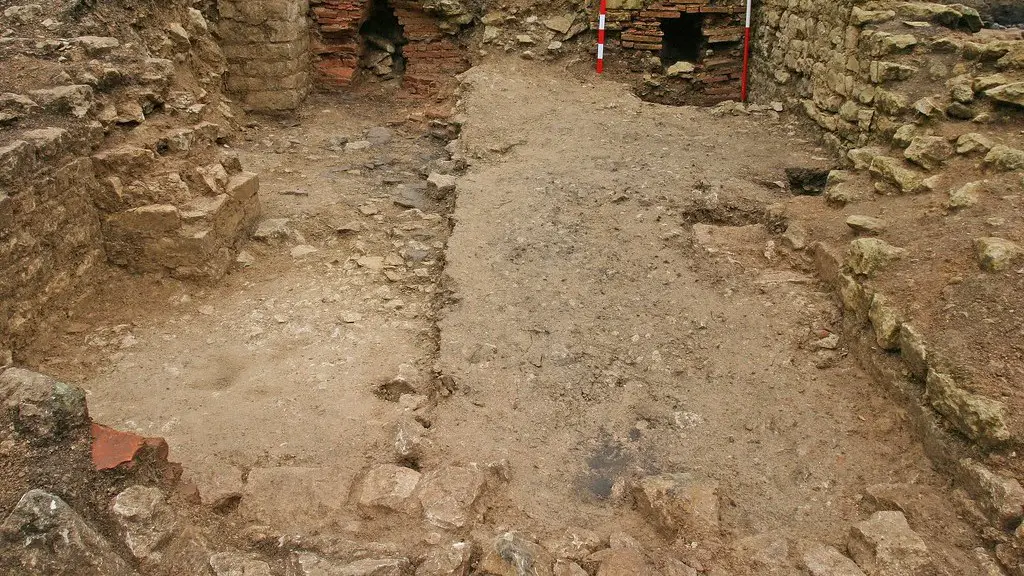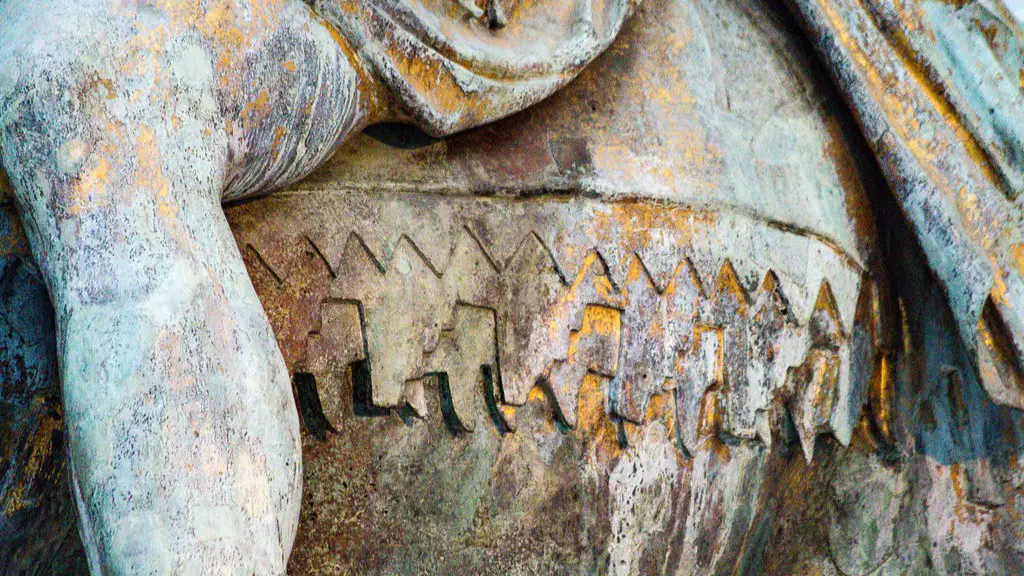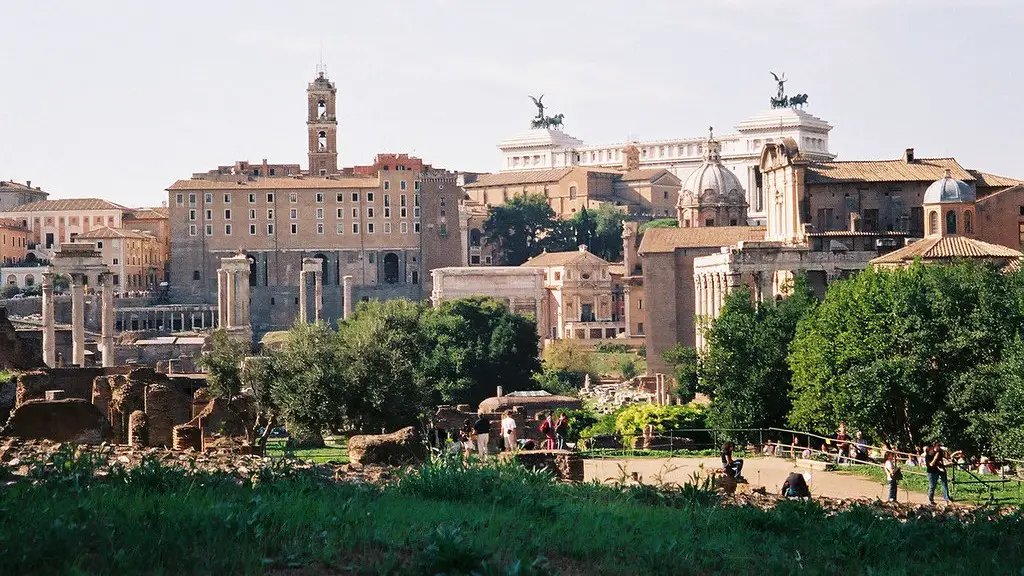People
In ancient Rome, slaves served a major role in the economy, providing a large portion of the workforce. There is evidence to suggest that there were as many as three million slaves in the Roman Empire at its peak. Slaves represented a wide range of skillsets, from agricultural work, to construction, to domestic work.
The majority of slaves in ancient Rome were owned privately or by large public or private enterprises. Many would be bought at auctions, taken in by their captors and forced into service. Although their owner had the right to grant them freedom, it was rare for slaves to obtain this privilege.
The conditions for slaves in ancient Rome varied depending on their master, but it was generally far from ideal. Slaves were typically required to work long hours for limited pay and with little or no rights. They were especially vulnerable to abuse, and in some cases, even sexual exploitation.
While some slaves were highly skilled, there were many who were forced to take on menial tasks such as cleaning, cooking, or caring for children and the elderly. They could also be used as personal assistants or bodyguards, or as laborers in manufacturing and mining.
Most slaves in ancient Rome had no form of recourse against their mistreatment. Much of the time, slaves had no legal rights of any kind, and their owners were not held accountable for their actions. In fact, it was common for slaves to be beaten, tortured, and even murdered in particularly egregious cases.
Despite their limited rights, there was an effort in some areas to improve the conditions of slavery in ancient Rome. Select lawmakers began to recognize slaves as people and not property and proposed legislation that protected their rights, although the laws were never fully implemented.
Common Jobs for Slaves
Slaves in ancient Rome were often given jobs based on the skills that they brought with them. Generally, this meant that the more educated and experienced slaves were often given more responsibility and higher social status.
Some of the most common jobs for slaves in ancient Rome were as agricultural laborers, urban house servants, overseers, bodyguards, teachers, and interpreters. Others were employed as entertainers, bakers, butchers, artisans, physicians, and architects.
Urban slaves often had the most responsibility and freedom. They had access to the city’s public places and transportation, and they could often conduct business on their own. They were also often better off than rural slaves, who generally had to endure backbreaking labor in the fields.
Some slaves received preferential treatment or could even purchase their freedom. This was especially true of educated slaves, as they were often treated better by their masters and could usually earn enough money through business deals and other ventures to eventually gain their freedom.
In rare cases, some slaves in ancient Rome were able to gain access to higher education and even rise to positions of prominence. This was especially true of those who served in the upper echelons of society, such as in the Roman army or in the palace of the emperor.
Lifestyle of Slaves
Slaves in ancient Rome lived in difficult and often perilous situations. They were generally expected to live in overcrowded dwellings and to endure poverty, malnutrition, and disease. Underprivileged slaves were also susceptible to abuse and exploitation, especially those who served in public or private households.
Despite the difficult conditions, some slaves were able to make the best of their situation. Those that served in public households often had better access to resources, such as food and medical care. They were also often granted more personal liberties and, in some cases, even had the chance to earn a living on the side.
Slaves in ancient Rome could also sometimes gain access to education and even participate in social gatherings. This was especially true of those that served in more affluent households, where they were sometimes allowed to attend parties and events. Slaves could also receive gifts, visit theaters and baths, and participate in religious festivals.
Slaves were often able to enjoy a sense of community and develop relationships with other slaves. In some cases, these would form strong bonds of support and friendship and even a feeling of family. Some of these relationships even endured after the slaves had gained their freedom.
In spite of all the suffering they endured, some slaves in ancient Rome managed to take control of their own fate. They made the best of their situation, found ways to better themselves, and even gained the respect of their masters and contemporaries.
Revolts and Rebellions
In spite of the harsh conditions and limited freedom, slaves in ancient Rome still tried to resist their oppression. They organized revolts and rebellions and even formed secret societies and religious groups to fight against slavery. Slaves would often run away and hide, or join forces with brutal criminals in an attempt to gain their freedom.
Slave revolts and rebellions could be quite dangerous and disruptive. Some of the largest revolts in ancient Rome included the Sicilian revolt and the servile war, both of which resulted in great loss of life and property. Despite these and other revolts, however, slavery still remained an integral part of the Roman economy.
The punishments imposed on those who engaged in revolt or rebellion could be quite harsh. Those that were caught were often branded, tortured, or even killed. While some may have escaped with their lives, the risks and consequences of slave revolts were high.
Despite these risks, many slaves in ancient Rome were willing to take a stand for their freedom. They fought for their rights, even as they endured harsh conditions, and many of them made great sacrifices in pursuit of their liberation.
Economic Impact
Slaves in ancient Rome played an important role in the economy. They provided a cheap source of labor and allowed their masters to reap large profits from their work. Slaves also served as a form of currency, and were frequently used as collateral to secure business deals and loans.
Slaves also contributed to a number of important fields, such as art, literature, and music. Freed slaves often went on to become prosperous members of society, sometimes even gaining political office. They also acquired valuable experience and knowledge, which had a great impact on the Roman economy.
The decline of slavery in ancient Rome had a significant effect on the economy. While the loss of slave labor was damaging, it had the added effect of raising wages for the free workforce. This allowed more people to enter the workforce, which contributed to growth and prosperity.
In spite of the economic value of slavery, it was ultimately abolished in the Roman Empire. This process began in the first century CE and was eventually completed in the mid-fourth century as slaves increasingly gained their freedom through manumission.
Consequences of Slavery
The widespread practice of slavery in ancient Rome had a lasting impact on the city and its people. The conditions for slaves were often horrendous, and many were subjected to abuse and exploitation. Slaves were viewed as property, and some were even viewed as less than human.
The practice of slavery had a particularly damaging effect on the mental health of slaves. The lack of personal rights and freedom, along with the physical and psychological abuse, often led to depression and other mental health issues. Some even suffered from PTSD and suicidal thoughts, leading to an overall decline in the mental health of slaves.
The practice of slavery in ancient Rome also had a negative effect on society at large. It was a major contributor to the escalating wealth disparity, led to a weakened social structure, and created a culture of fear and distrust among the people.
The experience of slavery was also damaging to the physical health of slaves. They were often malnutritioned and subjected to harsh working conditions, leading to physical injuries and a host of illnesses. Slaves were also vulnerable to infectious diseases, which could spread quickly within a large slave population.
The consequences of slavery in ancient Rome were far-reaching. Although slavery was eventually abolished, the legacy of this damaging practice still can still be seen today, in the forms of unequal rights, wealth disparities, and social unrest.





